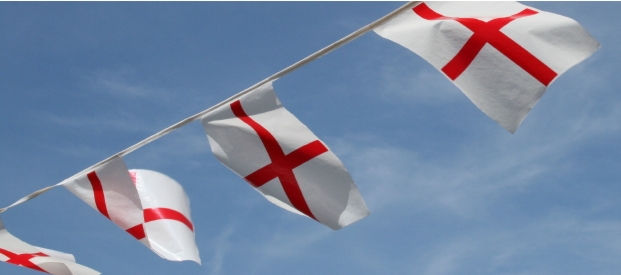Saint George’s Day
 Mention Saint George, and images of dragons, maidens and sword-bearing heroes spring to mind. But is it true that he was really a Roman soldier from Turkey and never actually met a dragon?
Mention Saint George, and images of dragons, maidens and sword-bearing heroes spring to mind. But is it true that he was really a Roman soldier from Turkey and never actually met a dragon?
A soldier saint
Sifting facts from myths isn’t easy, but as far as is known, the real Saint George was born in the 3rd century in Cappadocia, now in Turkey. He was a Christian soldier in the Roman army, reaching the rank of Tribune. When he protested against Rome’s persecution of the Christians, he was imprisoned, tortured and beheaded for his strong beliefs.
It was in the 12th century that Crusaders returning from wars overseas brought tales of Saint George’s bravery back to England. In battle they wore his emblem of the red cross and considered him their special protector. After the Battle of Agincourt in 1415, King Henry V declared Saint George patron saint of England.
Saint George and the dragon
The legend comes from medieval times and tells of a land tormented by a dragon. One person each day is sacrificed to satisfy its hunger. Just as the king’s own daughter is about to be eaten, Saint George arrives, slays the dragon, rescues the princess and saves the whole kingdom.
Celebrating Saint George
St George’s Day falls on 23 April. If you already knew the date, congratulations: you’re one of just 40% of people who know the date of England’s patron saint, according to a poll carried out last year for ‘British Future’. A study carried out by YouGov in 2012 suggests that 73% of English people say the day should be a public holiday. Some would like it to be more of a celebration of all things English, in the same way that the saints’ days are already recognised in Ireland, Scotland and Wales.
There are plenty of events for Saint George’s Day this year. You’ll find dragon-slaying as well as jousting, jesting and falconry at English Heritage’s festival at Wrest Park, Bedfordshire; the best of English food and drink at London’s Feast Day; and Saint George himself demonstrating Roman horsemanship at Hadrian’s Wall at Hexham. Add to this a street party in Plymouth, beer-tasting in Clapham, day of dance in Liverpool, and archery in Southampton and that’s just a taster of the many events this spring.
As a nation we may forget the date, and perhaps we know more of the legend than the real man, but there’s no doubt that Saint George’s Day is a day to celebrate ‘Englishness’ at its best.










Apparently St George is also patron saint of Bosnia and Herzegovina, Bulgaria, Canada, Croatia, Cyprus, Georgia, Greece, Macedonia, Romania and Serbia. Apparently the crusaders on their return to England reported that a vision of St. George had led them at the battle of Antioch.
Very interesting! Thanks for the info!